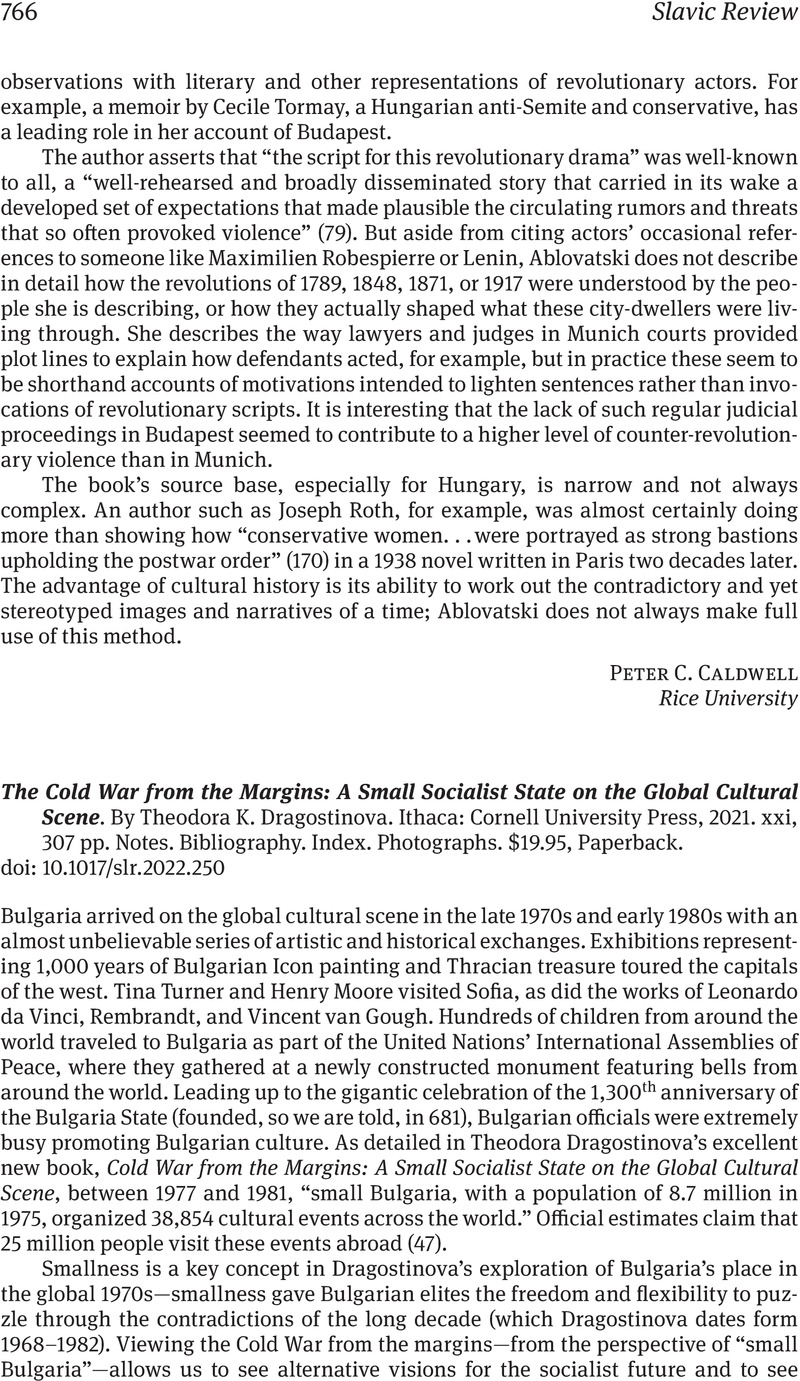No CrossRef data available.
Article contents
The Cold War from the Margins: A Small Socialist State on the Global Cultural Scene. By Theodora K. Dragostinova. Ithaca: Cornell University Press, 2021. xxi, 307 pp. Notes. Bibliography. Index. Photographs. $19.95, Paperback.
Review products
The Cold War from the Margins: A Small Socialist State on the Global Cultural Scene. By Theodora K. Dragostinova. Ithaca: Cornell University Press, 2021. xxi, 307 pp. Notes. Bibliography. Index. Photographs. $19.95, Paperback.
Published online by Cambridge University Press: 07 February 2023
Abstract
An abstract is not available for this content so a preview has been provided. Please use the Get access link above for information on how to access this content.

- Type
- Book Review
- Information
- Copyright
- Copyright © The Author(s), 2023. Published by Cambridge University Press on behalf of the Association for Slavic, East European, and Eurasian Studies


